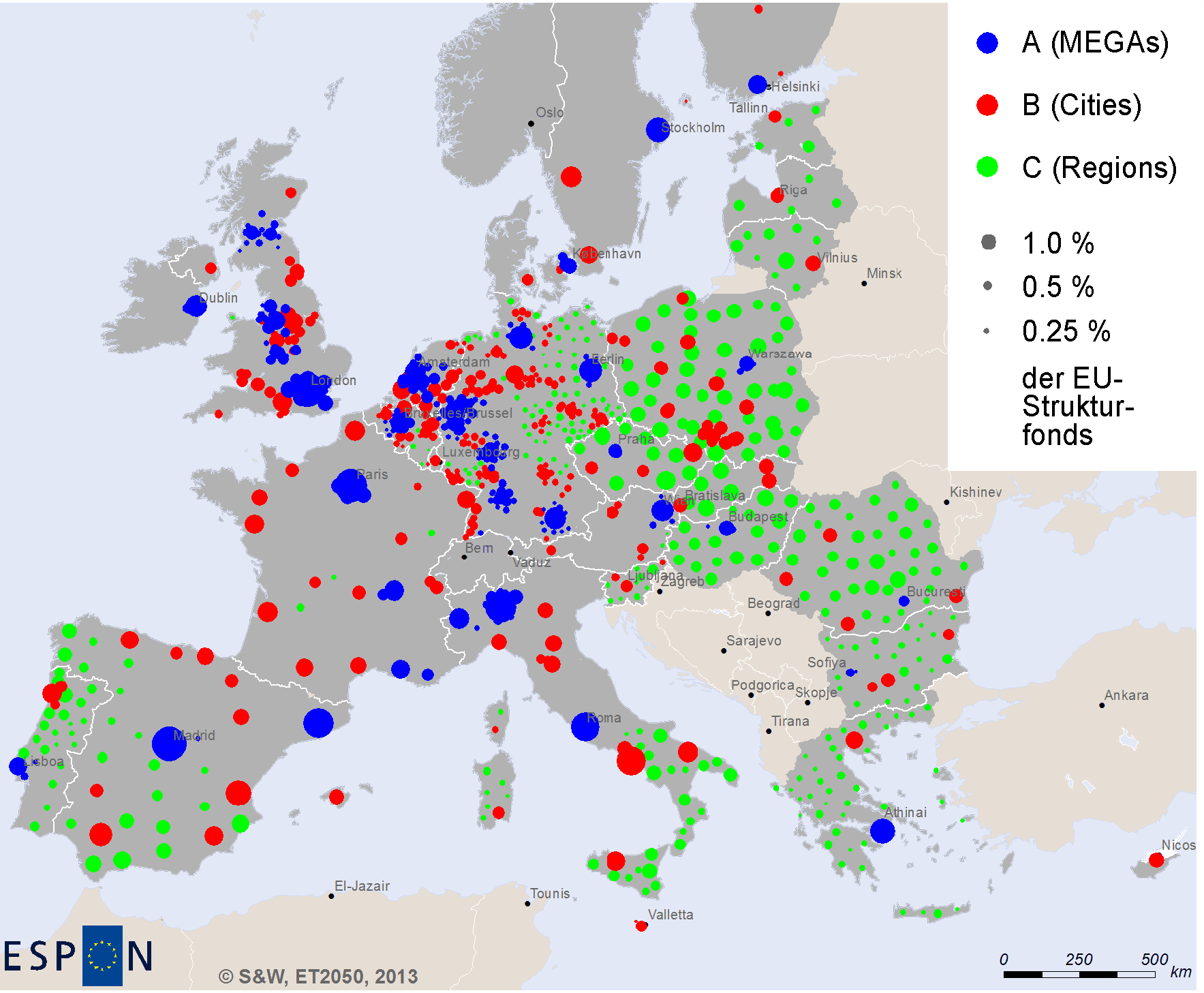ESPON ET2050: Territorial Scenarios and Visions for Europe (2011-2014)
The aim of this project was to develop a vision of the European territory supported by sound scientific knowledge. In a participatory process different groups of stakeholders were involved in developing the vision to widen thematic, temporal and territorial horizons by imagining a future that transcends sector-based, short-term and domestic policy considerations. The following key questions were to be answered: (1) What is the current state of the European territorial structure? (2) What will be the future European territorial structure if development trends and policies remain unchanged? (3) What are feasible future European territorial structures in three exploratory scenarios? (4) What is the room for politically steering the future territorial development in Europe? (5) What could be midterm targets in order to steer territorial development towards the desired long-term vision, and what policy actions are required to meet these midterm targets? The task of S&W in the project was to model the spatial development of the European continent until the year 2050 subject to different assumptions about the future structural and cohesion policy of the European Union and the further improvement of the European transport networks. Project partners were, under the project leadership of Mcrit S.L. (Spain), twelve research institutions from Belgium, France, Greece, Hungary, Italy, the Netherlands, Poland and Sweden. More information about the project is available on the project page of S&W, the central project website and the ESPON website
S&W's task in the project was to model the spatial development of the European continent up to the year 2050 under different assumptions about the future structural and cohesion policies of the European Union and the further expansion of European transport networks, with unchanged assumptions about the overall development of the European economy and external migration after the economic crisis of 2008.
| For this purpose, a baseline scenario and three exploratory scenarios were developed: | |
| - | In scenario A (MEGAs), the large European metropolitan regions are promoted in the interest of competitiveness and economic growth. |
| - | In scenario B (Cities), larger European cities are promoted in order to strengthen the balanced polycentric spatial structure of Europe. |
| - | In scenario C (Regions), rural and peripheral regions are promoted in order to strengthen spatial cohesion between prosperous and economically backward regions. |
In all scenarios, the total volume of EU structural fund expenditure has been capped at 0.4 percent of the total gross domestic product of the EU, and only the distribution of structural funds to the regions is varied according to the scenario objectives: in scenario A proportional to the gross domestic product of the MEGAs, in scenario B proportional to the number of inhabitants of the funded cities, and in scenario C as in the baseline scenario as an inverse function of the gross domestic product per inhabitant of the funded regions. The map below shows the resulting distribution of structural funds:

A compact overview of the ESPON ET2050 project is given in the brochure Making Europe Open and Polycentric. Visions and Scenarios for the European Territory towards 2050. Luxembourg: ESPON. Further information on the overall project is available on the project website and the ESPON website.
The scenarios calculated with the SASI model are described in Spiekermann, K., Wegener, M. (2014): Integrated Spatial Scenarios until 2050. ET2050 Scientific Report Volume 6. Dortmund: Spiekermann & Wegener Stadt- und Regionalforschung and in the presentation ESPON Project ET2050: Spatial Scenarios and Visions for Europe 2050 and the conference paper Spatial Scenarios for Europe 2050.
Information on the SASI model is available on the SASI model page. The SASI model is described in Wegener, M. (2008): SASI Model Description. Working Paper 08/01. Dortmund: Spiekermann & Wegener Stadt- und Regionalforschung.

